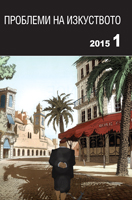Трансформации на време-пространството при прехода от комикс към екран
Transformations of the time-space continuum in transition from comics to screen
Author(s): Radostina NeykovaSubject(s): Fine Arts / Performing Arts, Visual Arts, Film / Cinema / Cinematography
Published by: Институт за изследване на изкуствата, Българска академия на науките
Summary/Abstract: The parameters of time and space are quite broad in the world of comics. The conventionality of the depicted representation allows for quick transition in space and over time. The panels of the comic strips could also be perceived as single forms of fine arts, whose two-dimensional composition is subjected to all fundamental laws of fine arts. Still, with the succession of several such frames one after another their function is complicated. Now they already create an illusion of a dynamic composition, showing key moments of a motion through space and over time. The succession of the frames in itself suggests the development of a certain element (motion, character, space or time). The artistic time continuum in comics exists like an illusion, as a result of the motional, behavioural and even historical experience of each of us. Time and motion exist mostly in the imagination of artists of comics and their proper perception by readers underlies a successfully told depicted story. The artistic time continuum in comics (very much like that in animation) often stops going in only one direction and runs backwards. The succession, spatial and causal relationships are broken. Time is now a vector. Still, it has to be well organised and structured to be perceived properly.
Journal: Проблеми на изкуството
- Issue Year: 2015
- Issue No: 1
- Page Range: 33-36
- Page Count: 4
- Language: Bulgarian
- Content File-PDF

